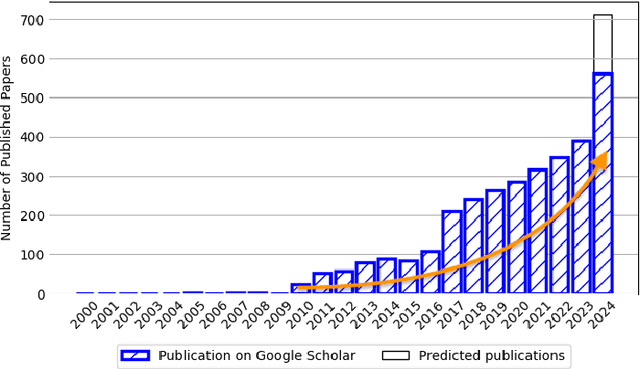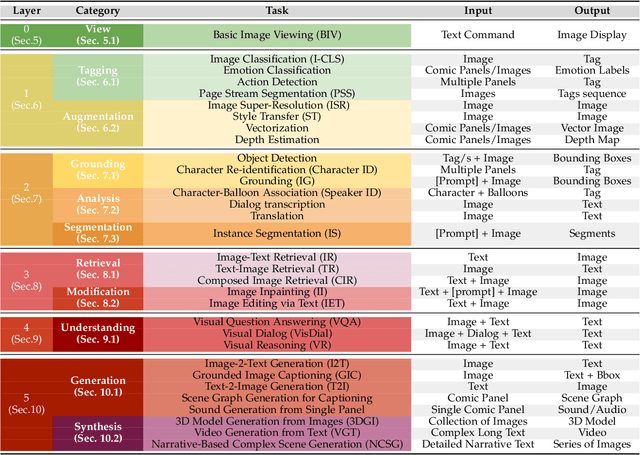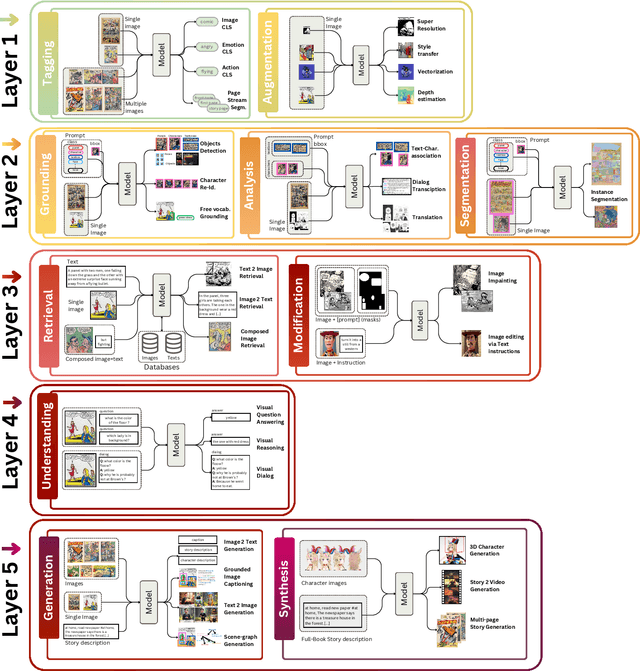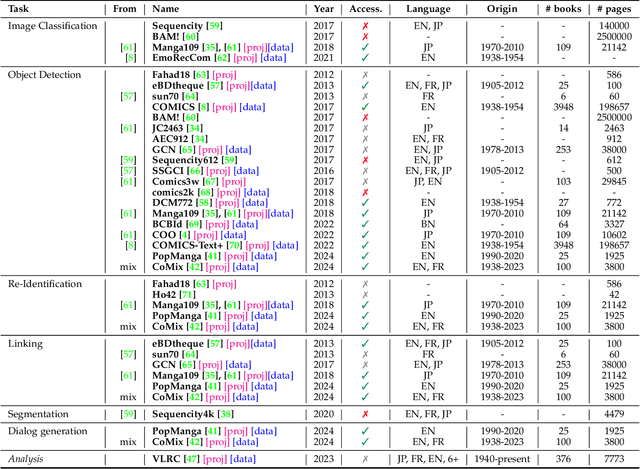Artemis LLabres
One missing piece in Vision and Language: A Survey on Comics Understanding
Sep 14, 2024



Abstract:Vision-language models have recently evolved into versatile systems capable of high performance across a range of tasks, such as document understanding, visual question answering, and grounding, often in zero-shot settings. Comics Understanding, a complex and multifaceted field, stands to greatly benefit from these advances. Comics, as a medium, combine rich visual and textual narratives, challenging AI models with tasks that span image classification, object detection, instance segmentation, and deeper narrative comprehension through sequential panels. However, the unique structure of comics -- characterized by creative variations in style, reading order, and non-linear storytelling -- presents a set of challenges distinct from those in other visual-language domains. In this survey, we present a comprehensive review of Comics Understanding from both dataset and task perspectives. Our contributions are fivefold: (1) We analyze the structure of the comics medium, detailing its distinctive compositional elements; (2) We survey the widely used datasets and tasks in comics research, emphasizing their role in advancing the field; (3) We introduce the Layer of Comics Understanding (LoCU) framework, a novel taxonomy that redefines vision-language tasks within comics and lays the foundation for future work; (4) We provide a detailed review and categorization of existing methods following the LoCU framework; (5) Finally, we highlight current research challenges and propose directions for future exploration, particularly in the context of vision-language models applied to comics. This survey is the first to propose a task-oriented framework for comics intelligence and aims to guide future research by addressing critical gaps in data availability and task definition. A project associated with this survey is available at https://github.com/emanuelevivoli/awesome-comics-understanding.
 Add to Chrome
Add to Chrome Add to Firefox
Add to Firefox Add to Edge
Add to Edge